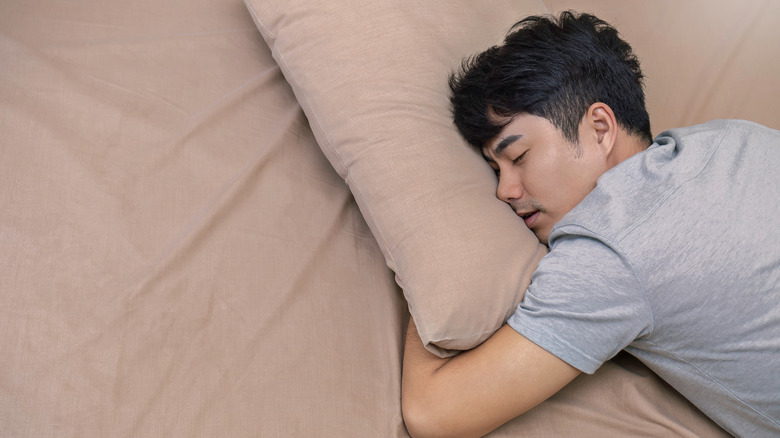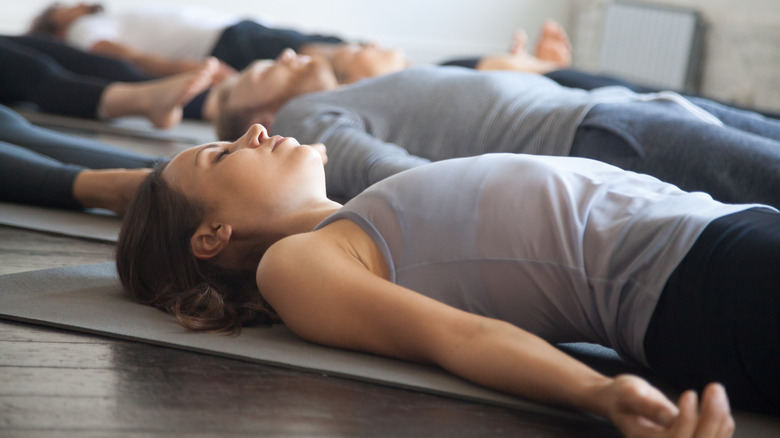What's Really Causing You To Twitch When You're Falling Asleep
Chances are, you or someone you know experiences irritating twitches while trying to fall asleep. That twitching, called hypnagogic jerks or hypnic jerks, can be jarring but is actually fairly common. Researchers say 60 to 70 percent of people experience hypnic jerks, usually as they are about to fall asleep or in a light state of sleep (via Medical News Today).
These muscle spasms occur in the state of transition between wakefulness and sleep. They can be spontaneous or prompted by sound, light or other external stimuli, according to Live Science. Some people even report dreams, hallucinations, the sensation of falling, raised heart rate or breathing, as they are experiencing their hypnic jerks.
But the exact reasoning for hypnic jerks remains a mystery for the most part. Experts have speculated external factors like stress, anxiety, or consuming stimulants like caffeine or nicotine could be potential causes, according to Medical News Today.
How to stop twitching in your sleep
Lack of sleep or poor sleep health in general could also be a likely culprit for hypnic jerks, along with exercising later in the evening, according to Medical News Today. This may sound counter-intuitive, but even though your body may feel tired after a workout, it could struggle to fully relax in time for a restful sleep.
Hypnic jerks shouldn't affect your sleep cycle, but it can be distracting to those sleeping nearby. If you are looking to lessen the likelihood of twitching, there are some recommended lifestyle changes you can make, like creating a relaxing bedtime routine with meditation, turning down any lights, and avoiding caffeine or stimulants.
Although hypnic jerks aren't inherently dangerous or a sign of an underlying medical condition, you should still seek medical advice if you are concerned with twitching or your overall sleep quality.


